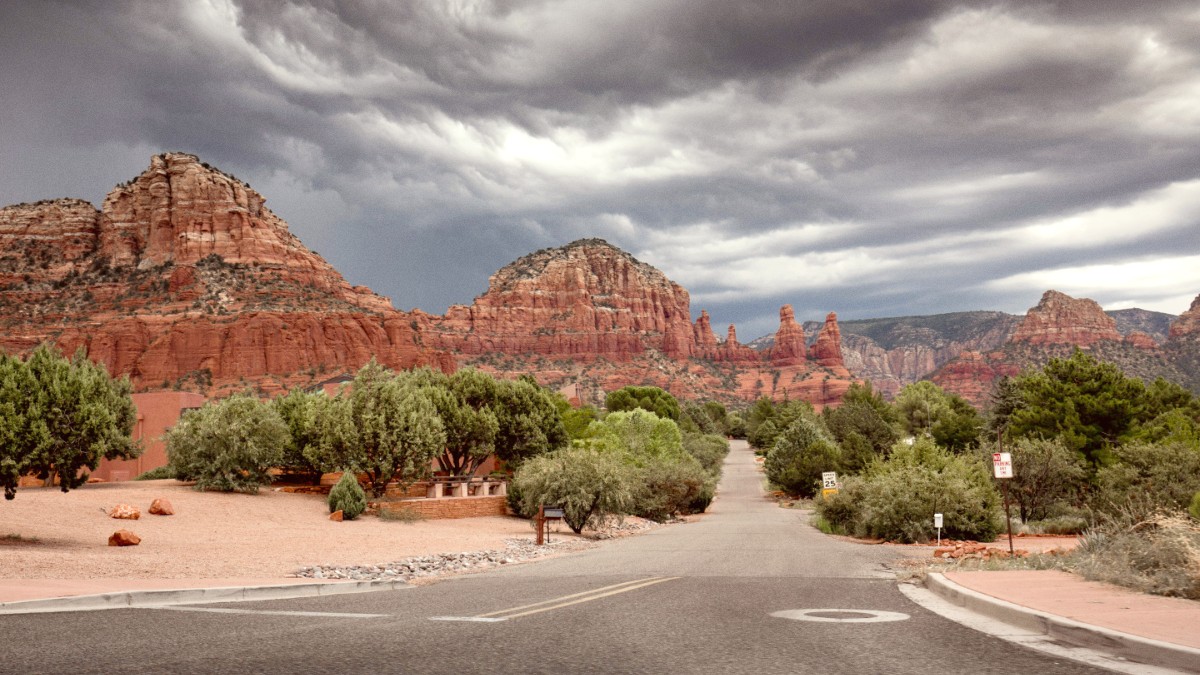
Arizona, USA
No particular vaccinations are needed for entry to the U.S. For international travelers. However, the Centers for Disease Control and Prevention (CDC) suggests routine vaccinations for all travelers. Speak with your healthcare provider at least a month before your trip to ensure your routine vaccinations are current.
Primary worries include dehydration and heat exhaustion, especially in summer. The dry desert air may cause rapid fluid loss. Hydration is key; avoid peak sun hours (10 AM - 4 PM) for strenuous outdoor activities. Light, breathable clothing is a good choice, as are Wide-brimmed hats. Sedona sits at about 4,500 feet (1,370 meters) elevation; while generally not high enough for severe altitude sickness, some individuals might encounter mild symptoms. Hydration and avoiding alcohol on your first day can assist. The high desert elevation and clear skies mean a high UV index. Broad-spectrum Sunscreen with SPF 30 or higher, like EltaMD UV Clear Facial Sunscreen SPF 46, is a good idea. Wear Sunglasses and UV-protective clothing.
Sedona's tap water is safe to drink and meets U.S. Public health standards. Water fountains exist in some public areas, but bringing your own water bottle proves best. Restaurants and food establishments in Sedona follow strict U.S. Health and safety regulations. You dine with confidence at any reputable establishment.
Image: A clear night sky over Sedona for stargazing.
Mid-July to Mid-September
Heavy rain, strong winds, lightning, and rapid flash floods in washes.
Avoid hiking in washes during rain. Never drive through flooded roads. "Turn Around, Don't Drown."
Summer Months
Days may reach over 100°F (38°C). Risk of dehydration and heat exhaustion.
Stay well hydrated. Avoid strenuous activity 10 AM to 4 PM. Wear light clothing and a hat.
Dry Periods
High risk, especially late spring/early summer. Fire restrictions may apply.
Strict adherence to all fire restrictions is advised. Do not discard cigarettes. Monitor news for alerts.
Sedona generally is a very safe community with low crime rates. Most reported incidents involve property, like vehicle break-ins at popular trailheads. Exercise standard precautions regardless of the neighborhood. Avoid leaving valuables visible in parked cars, especially at trailheads or scenic overlooks. Lock your vehicle and secure your belongings. Awareness of your surroundings proves useful, notably after dark in less populated areas.
All areas of Sedona (Uptown, West Sedona, Village of Oak Creek) appear safe for visitors.
911
+1-928-282-3100
+1-928-204-3000
+1-928-282-4119
For international visitors, have this contact information available.
Sedona's temperatures vary noticeably between day and night, and across different elevations. Layering is a strategic method.
Start with moisture-wicking short or Long-sleeved shirts; these fabrics draw sweat away from your skin. Add a Fleece jacket or lightweight insulated jacket for warmth. A windproof and Waterproof shell jacket shields you from unexpected rain or wind. A Columbia Watertight II Jacket is a versatile choice. For Spring/Fall, versatile layers are a good idea. Long pants, protecting against sun and brush, and a Light jacket or fleece prove useful. Consider a Light scarf for cooler mornings.
Summer (June - August): Lightweight, breathable, and light-colored clothing matters. Opt for fabrics like cotton, linen, or moisture-wicking synthetics; these materials aid in maintaining coolness. A wide-brimmed hat and sunglasses are important for sun protection. If visiting Slide Rock State Park, bring a Swimsuit and Quick-drying towel. Winter (December - February): Pack warm layers. Include thermal underwear, a warm fleece, an insulated jacket, a Warm hat, Gloves, and a Scarf. Jeans or insulated hiking pants suit daily wear. Wool Socks keep feet warm and dry.
U.S. electrical outlets are Type A and Type B (120V at 60Hz). If traveling from a country with different plugs or voltage, a Universal travel adapter like the Ceptics World Travel Adapter Kit is a good idea. Most modern smartphones generally pair well with U.S. networks; consider an eSIM service like Airalo. Sedona presents incredible photographic opportunities, so a DSLR or Mirrorless camera with wide-angle and telephoto lenses works well. An Action camera like GoPro HERO12 Black works superb for dynamic footage.
These items add to comfort, security, and convenience during your travels.